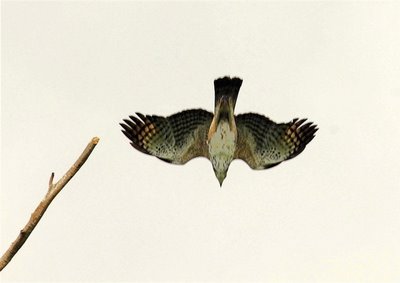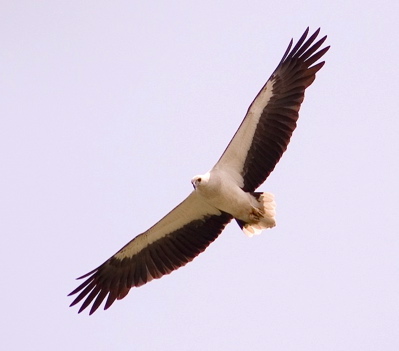Changeable Hawk-eagle attacking colugo


Colugo or flying lemur (Cynocephalus variegates) is a mammal that goes back to ancient times (above). Colugo is a better name as flying lemur can be misleading. Why? True lemurs are primates that are only found in the island of Madagascar. The images below show the Ring-tailed Lemur (Lemur catta), a true lemur, basking in the sun (below, left) and huddling from the cold (below, right).


Colugo is also a mammal but it is neither a lemur nor a primate. It belongs to a separate order of its own, the Dermoptera (Greek derma = skin; ptera = wing). It does not fly but actually glides. This it does with the help of a special membrane that extends from the neck region to the fore feet and the hind feet and thence to the tip of the tail (below).
 In Singapore, Colugo is found in the Bukit Timah Nature Reserve and the Central Catchment Forest.
In Singapore, Colugo is found in the Bukit Timah Nature Reserve and the Central Catchment Forest. Hot from the press is a book on this fascinating animal, written by Norman Lim with Morten Strange as editor (left). The book is published by Draco Publishing and Distribution Pte. Ltd. in conjunction with Raffles Museum of Biodiversity Research, National University of Singapore. It is currently available at the Botanic Gardens Shop, Nature's Niche.
Hot from the press is a book on this fascinating animal, written by Norman Lim with Morten Strange as editor (left). The book is published by Draco Publishing and Distribution Pte. Ltd. in conjunction with Raffles Museum of Biodiversity Research, National University of Singapore. It is currently available at the Botanic Gardens Shop, Nature's Niche.The diet of this animal is mainly leaves, young shoots and flowers of selected plants. During the day it rest high up in the tree, clinging to a tree trunk or hiding in a tree hole. Comes dusk, it becomes active, gliding from tree trunk to tree trunk. The young is carried clinging to the flight membrane.
Cited in the book is a report by Tan Choo Eng; “On Aug 6, 2006, I was at an uncompleted stretch of the new Baling Gerik highway on the Perak section in Peninsular Malaysia together with two other members of the Malaysian Nature Society. We witnessed a Changeable Hawk-eagle (Spizaetus cirrhatus, pale morph) attack a Colugo.
 “After the failed attack, the Colugo stayed motionless (11am) on an exposed mid section of a tree trunk for about 40 minutes, even after the threat was gone (11.40am). Then it scampered up the tree trunk and glided into some more leafy trees.”
“After the failed attack, the Colugo stayed motionless (11am) on an exposed mid section of a tree trunk for about 40 minutes, even after the threat was gone (11.40am). Then it scampered up the tree trunk and glided into some more leafy trees.” The image on the left is that of a Changeable Hawk-eagle, pale morph.
Images from top, of Colugo clinging on to tree trunk and palm frond by Johnny Wee, Ring-tailed Lemur by YC; Colugo gliding by YC; book cover by Morten Strange; and Changeable Hawk-eagle by Johnny Wee.
Labels: Feeding: raptor





























